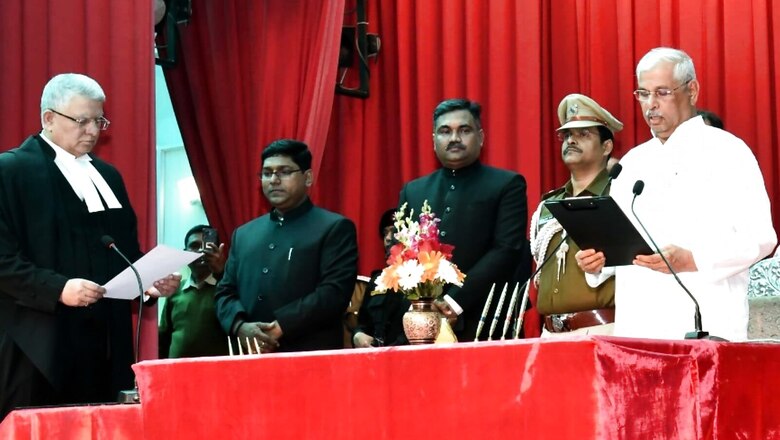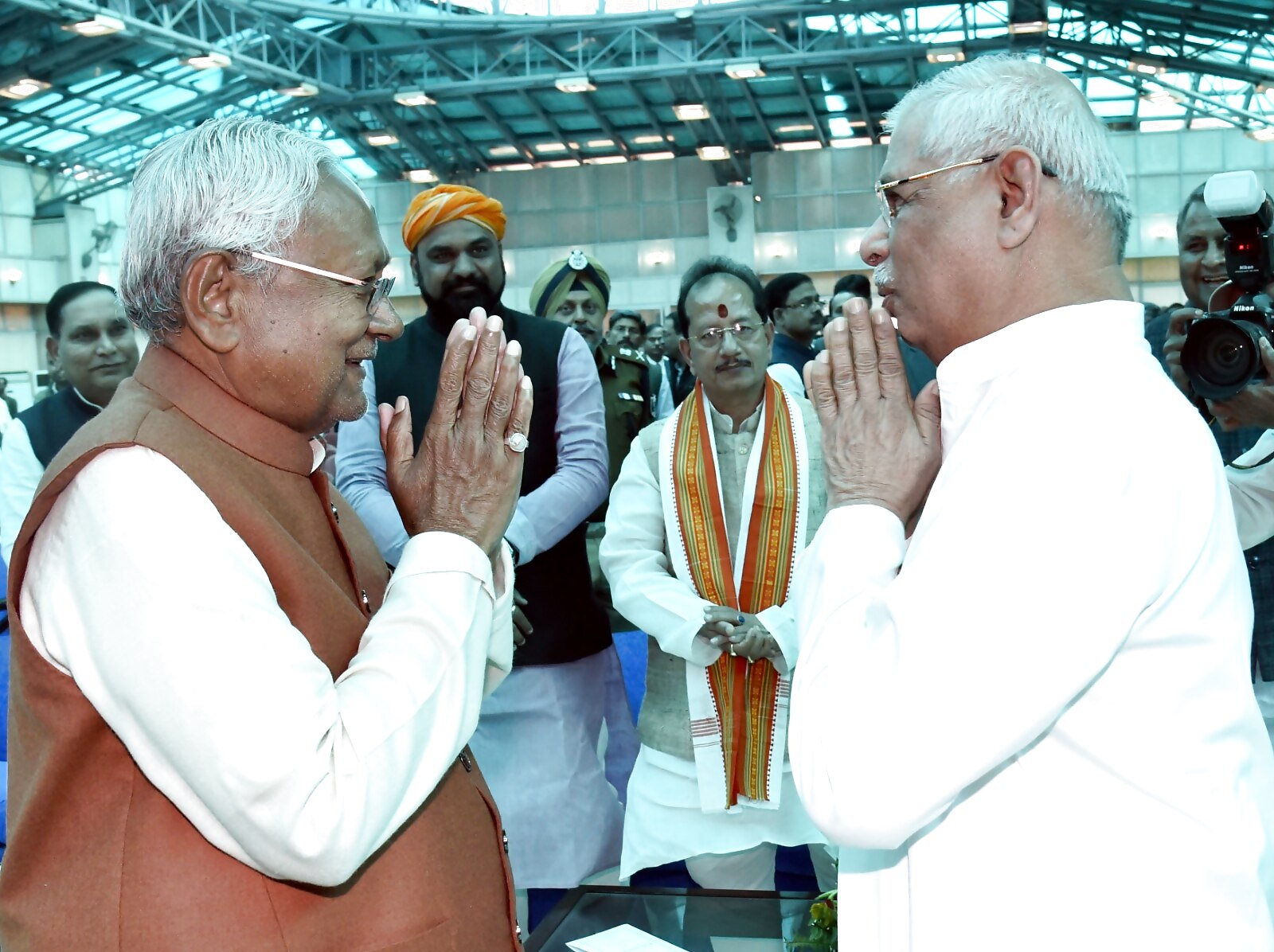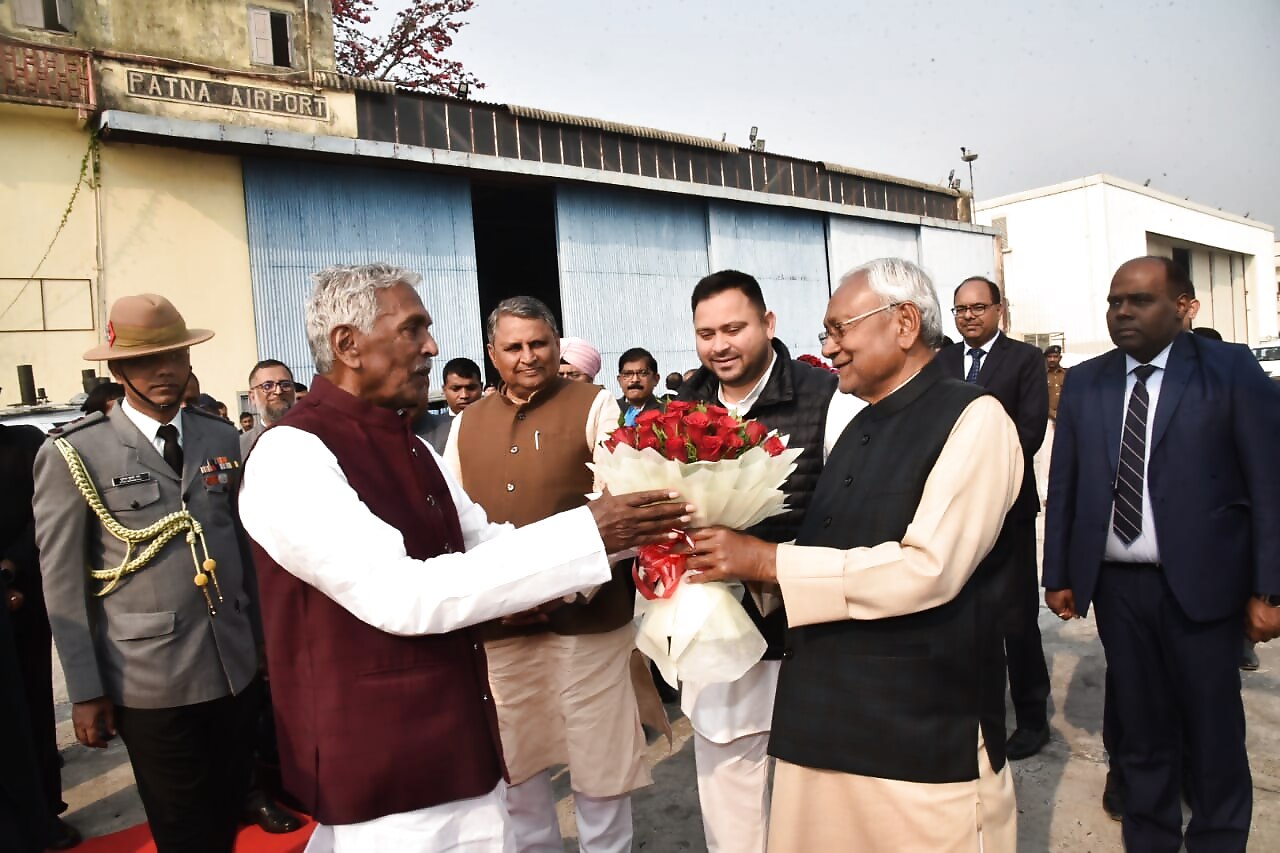
views
Rajendra Vishwanath Arlekar, 68, took oath as the 41st Governor of Bihar, administered by acting chief justice Chakradhari Sharan Singh, in the presence of chief minister Nitish Kumar, deputy CM Tejashwi Yadav and other ministers in Raj Bhavan on Friday.
Arlekar was among the six new faces appointed as Governors by the Centre on Sunday, besides carrying out rejig of the gubernatorial posts in seven states. Arlekar was shifted from the post of Himachal Pradesh’s Governor to Bihar.
When asked about his reaction on being appointed Governor of the non-Bharatiya Janata Party-ruled state, where Nitish Kumar-led JD(U)-RJD alliance was in power, Arlekar had earlier told PTI, “A government is a government, it does not make a difference which party it belongs to.” He had said the Centre must have deemed it fit to give him the responsibility of a bigger state like Bihar considering his experience. Arlekar had added that he was happy to work for the country, wherever he gets an opportunity. “I thank the central government for giving me this opportunity,” he had said.
On February 13, Nitish Kumar during his ‘samadhan yatra’ in Aurangabad told the media, “Union home minister Amit Shah telephoned me day before yesterday. I said it is fine and called up the outgoing Governor. The gentleman had been here for only three-and-a-half years. It must have been about 25 years since a Governor had a full five-year tenure in Bihar.”
WHO IS ARLEKAR?
Governor Rajendra Vishwanath Arlekar has served as the Speaker of Goa legislative assembly and the minister of forest, environment and panchayat in the Goa government before being appointed as the Governor of Himachal Pradesh in July 2021.
Born in Panaji on April 23, 1954, Arlekar has been associated with the Rashtriya Swayamsevak Sangh (RSS) since childhood. He has been an active member of the BJP since the 1980s. Before taking oath as the speaker of Goa assembly in 2012, he held various positions in the BJP and the state government.

Arlekar is credited with making Goa legislative assembly paperless, the first state assembly in India to do so. Arlekar was elected from the Vasco seat in 2002 and served as MLA till 2007. In 2012, he was elected as an MLA for the second term from Pernem seat and served as the Speaker and the cabinet minister.
In November 2014, when then Goa chief minister Manohar Parrikar was roped in as the defence minister, Arlekar was considered for the chief minister post, but the BJP national leadership preferred Laxmikant Parsekar. In October 2015, Arlekar was appointed minister of forest, environment and panchayat and served as a cabinet minister till 2017.
APPOINTMENTS MADE BY PHAGU CHAUHAN BEFORE LEAVING BIHAR
The outgoing Governor Phagu Chauhan was given a send-off by Kumar, Yadav and other senior officials of the state at the Patna airport on Thursday.
Chauhan, who had taken over as the state’s 40th Governor on July 29, 2019, was also accorded a farewell by the officers and staff of Raj Bhavan at a function. All the officers and staff of the Raj Bhavan were present. Principal Secretary R L Chongthu presented the outgoing Governor with a memento and a shawl.

During the farewell, Chauhan said, “I have always worked for development of higher education in the state.” He said he got full support and cooperation from the officials during his tenure and he would always cherish the love and affection shown to him by the people of Bihar.
Before leaving the state, Chauhan appointed Abhyanand Sinha as the registrar of Patliputra University, Patna. Sinha is currently an associate professor at Government Degree College, Rajgir in Nalanda.
A day after Chauhan was named Meghalaya Governor, he had appointed vice-chancellor and pro-vice chancellor at Magadh University. Magadh University was spearheading protests relating to delay in results and examinations, which CNN-News18 extensively covered in its ground reports. Later, the administration under the acting VC KC Sinha came into action and much-awaited processes started. Now, Prof Shashi Pratap Shahi and Prof Braj Raj Kumar Sinha were appointed as the VC and pro-VC of Magadh University by outgoing Governor Chauhan. Chauhan also appointed registrars at Kameshwar Singh Darbhanga Sanskrit University and Veer Kuer Singh University (Ara).
RAJ BHAVAN: STEEPED IN HISTORY
The separation of Bihar from Bengal – as proclaimed by King George V at Delhi Durbar – and the ensuing formation of the institution of office of Lt Governor in Council, ensured fast-paced evolution of the new capital at Patna
At the time, the four-year First Great War was to devastate humanity and the global economy by engulfing all the continents in a bloody war. From 1914, Bihar embarked on a new phase of its founding into a modern state. It was a process that peaked by 1922, but had started with the Delhi Durbar announcement of King George V on December 12, 1911.
The formal separation of Bihar from Greater Bengal in April 1912 was a momentous event. Among the firsts, it led to the formation of the big, singular institutional entity– first the office of Lieutenant Governor in Council with its Secretariat in Government House (later-day Raj Bhavan), which lasted till 1920, and then the office of Governor in Council under which arrangement of the first provincial elections to the legislative assembly were held in the country in 1937.
The office of Governor emerged in its present form post-Independence. The power, functions and constitutional position of the Governor were defined by the Constitution that the country adopted. It also announced itself to be a democratic republic having a parliamentary form of government on January 26, 1950, with the President as the head of the state at the Centre and Governor in the state/ province, even as real executive powers rest with the council of ministers headed by the Prime Minister at the Centre and the chief minister in the state.
Read all the Latest India News here
















Comments
0 comment